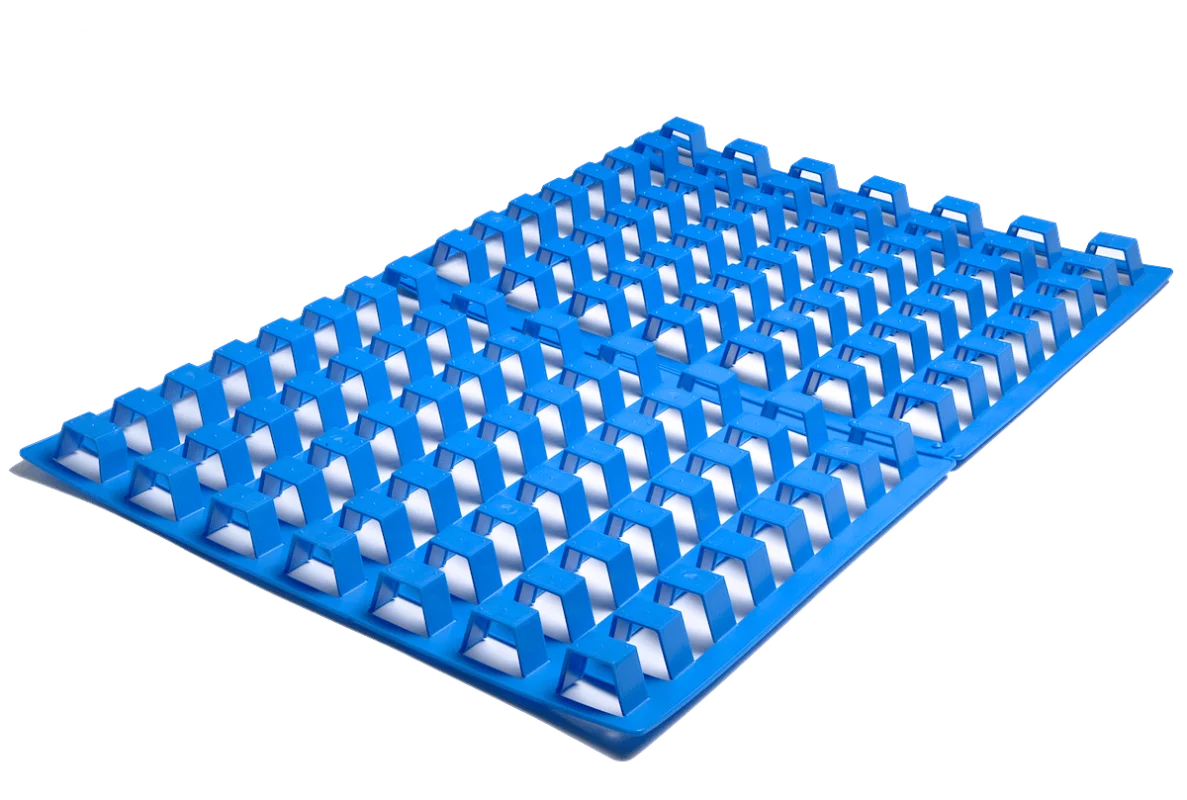Pallet Changing Machine: How to Ensure Safety in Shipyard Pallet Changes?
Handling heavy, unstable loads in a busy shipyard is a constant challenge. You see workers manually transferring goods from one pallet to another, often in tight spaces with forklifts moving all around them. This process is slow, inefficient, and fraught with danger. A single slip or a moment of inattention can lead to catastrophic accidents, damaged goods, and costly operational delays that ripple through your entire supply chain. You know there has to be a safer, more reliable way to manage these critical pallet changes.
Ensuring safety in shipyard pallet changes requires a systematic approach. The core of this strategy is using a dedicated pallet changing machine equipped with robust safety features like light curtains, safety fencing, and interlocking doors. This technology must be supported by strict operational protocols, comprehensive operator training on safe handling procedures, and a regular maintenance schedule to keep the equipment in perfect working order. This combination minimizes manual handling and controls the load throughout the entire transfer process.
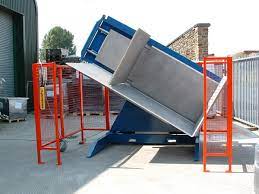
I have spent my entire career in the world of industrial machinery, from my early days as an engineer to building my own factory, SHJLPACK. I’ve seen firsthand how the right equipment can transform an operation's safety and efficiency. The principles of secure handling are universal, whether you're packing steel coils or managing logistics in a shipyard. Let’s break down exactly how you can implement a truly safe pallet changing process. We will explore the risks, the technology, and the operational best practices that protect your people and your bottom line.
What are the primary safety risks of manual pallet changing in a shipyard?
Imagine a typical scene at a busy port. The air is filled with the sound of machinery and the pressure is on to load and unload vessels quickly. In one corner, a team is struggling to manually transfer a heavy load of engine parts from a damaged wooden pallet to a new plastic one. This situation is a recipe for disaster. The most immediate risk is physical injury to your workers from lifting heavy or awkward items, leading to back problems and strains. The risk of crushing injuries is also very real if the unstable load shifts and topples over.
The primary safety risks of manual pallet changing in a shipyard are severe. They include musculoskeletal injuries from repetitive heavy lifting, crushing hazards from unstable or falling loads, and accidents involving forklifts operating in congested areas. Furthermore, manual handling increases the risk of product damage and contamination, which can lead to significant financial losses and operational delays. These combined risks create a hazardous and inefficient working environment.
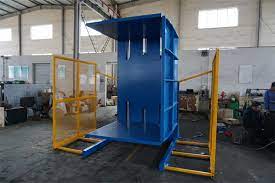
Early in my career, I witnessed a near-miss that I'll never forget. A team was manually restacking sacks of material when the pile became unstable. One worker slipped, and the entire stack came crashing down, missing him by inches. That incident showed me that relying on human strength alone for such tasks is a gamble you can't afford to take. In a shipyard environment, these risks are amplified. The ground can be uneven or wet, increasing the chances of slips and falls. Let's look closer at these dangers.
Deconstructing the Dangers of Manual Pallet Swaps
When you break down the process of a manual pallet change, you find multiple points of failure, each with its own set of consequences. It's not just one big risk; it's a chain of smaller ones that can lead to a major incident. For a leader like Javier Morales, who values stability and risk analysis, understanding these individual failure points is the first step toward building a safer system. It's about moving from reacting to accidents to proactively preventing them.
In the steel industry, we learned long ago that manual handling of heavy products like coils or wire is simply not an option. The same logic applies here. The weight, shape, and stability of goods destined for sea transport can be just as unpredictable and dangerous.
| Risk Category | Specific Dangers | Potential Consequences |
|---|---|---|
| Ergonomic Hazards | Repetitive lifting, bending, twisting | Chronic back pain, muscle strains, long-term disability claims |
| Impact & Crushing | Unstable loads toppling, items dropping | Broken bones, internal injuries, fatalities, damaged product |
| Equipment Interaction | Forklift collisions, workers in blind spots | Serious injuries, equipment damage, operational shutdown |
| Environmental Factors | Wet surfaces, poor lighting, confined spaces | Slips and falls, reduced visibility leading to errors |
| Product Integrity | Dropped boxes, contamination from floor | Financial loss, customer complaints, rejected shipments |
Thinking about these risks reminds me of a conversation with a client who ran a large distribution center. He was dealing with rising worker compensation claims, all tied to back injuries in the pallet handling area. He thought it was just "part of the job." We showed him how a pallet inverter could eliminate almost all of the manual lifting. A year later, his injury claims in that department dropped to zero. The investment paid for itself much faster than he ever expected, not just in insurance costs, but in improved morale and productivity. This is the kind of practical, tangible result that should drive every equipment decision.
How does a pallet changing machine fundamentally improve shipyard safety?
You are facing constant pressure to improve efficiency while managing the high-risk environment of a shipyard. Manual pallet changing is a bottleneck that introduces unacceptable levels of danger. Workers are forced to lift, push, and pull heavy loads, putting them at risk of injury every single day. This manual process is not just unsafe; it's also slow and unreliable, leading to delays and potential damage to valuable cargo. You need a solution that removes the human element from the most dangerous part of the task.
A pallet changing machine fundamentally improves shipyard safety by automating the transfer process and containing the load. The machine securely clamps the product, rotates or pushes it, and allows for the old pallet to be removed and a new one inserted without any manual lifting or risk of the load toppling. This mechanical control eliminates ergonomic injuries and crushing hazards, creating a predictable and secure operation.
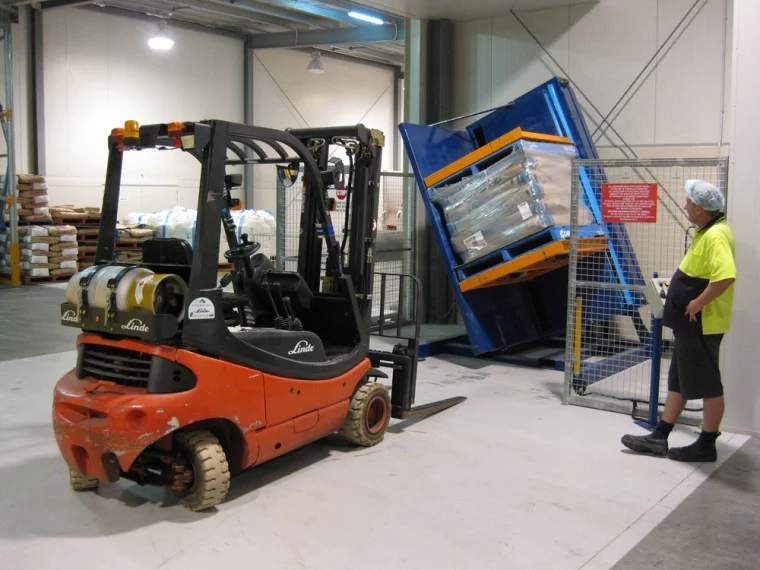
I believe in solving problems at their root. In my factory, we don't just put up warning signs; we re-engineer the process to eliminate the hazard. A pallet changing machine does exactly that. It's not a patch or a temporary fix. It is a fundamental change in how you handle goods. It takes a chaotic, unpredictable manual task and turns it into a controlled, mechanical, and safe procedure. This shift is crucial for any modern industrial operation, especially in demanding environments like a steel mill or a shipyard.
The Mechanics of a Safer Operation
The core function of a pallet changing machine, often called a pallet inverter or pallet exchanger, is to take control of the load away from human hands and place it into a secure mechanical system. This principle is the cornerstone of its safety benefits. Think of it as a protective shell that envelops the product during its most vulnerable moment: the transition between pallets. Let's examine how the different types of machines achieve this and why it's so effective. For an engineer or a plant owner like Javier, understanding the mechanics is key to trusting the solution.
1. The Pallet Inverter (180° Rotation)
This is the most common and often the most secure method.
- Process: The machine's clamps press on the top of the load and the bottom of the pallet. The entire unit—load and pallet—is then rotated 180 degrees. The original pallet is now on top, where it can be easily removed. A new pallet is placed on the load, and the machine rotates back.
- Safety Advantage: The load is never unsecured. It is constantly held under pressure between two platforms. This is ideal for robust, boxed goods or stable sacks. I've recommended this system to many clients handling anything from food ingredients to steel components. The complete control it offers provides the highest level of security against product shifting or falling.
2. The Pallet Exchanger (Push/Pull System)
This method is used when rotation is not suitable, for example, with very sensitive or liquid products.
- Process: One platform supports the pallet from below while a side wall and a top press hold the load in place. A pusher mechanism then gently slides the entire load from the old pallet onto a new pallet positioned right next to it.
- Safety Advantage: This system avoids the dynamic forces of rotation. The key to its safety is the precise control of the pushing mechanism and the secure clamping from the side and top. It ensures a smooth, level transfer. We once designed a custom solution for a client handling fragile electronics. A rotation system was out of the question. The push-style exchanger provided the gentle handling they needed while still eliminating all manual lifting.
| Feature | Pallet Inverter (Rotation) | Pallet Exchanger (Push/Pull) | Key Safety Impact |
|---|---|---|---|
| Load Control | Clamped top and bottom | Clamped top and side, supported bottom | Prevents load from shifting or toppling during transfer. |
| Manual Effort | Zero lifting required | Zero lifting required | Eliminates ergonomic injuries (strains, sprains). |
| Process Speed | Fast (typically < 60 seconds) | Moderate | Reduces worker exposure time in the handling area. |
| Footprint | Contained and predictable | Can be larger | Safety fencing defines a clear, safe operating zone. |
Ultimately, both systems achieve the same goal: they replace unpredictable human effort with predictable mechanical force. This is the definition of engineered safety. For a business leader focused on stability and reducing variables, mechanizing this process removes a significant source of operational risk and personnel-related uncertainty. It turns a liability into a controlled, efficient part of your workflow.
What specific safety features should you look for in a shipyard pallet changer?
You've decided that a pallet changing machine is the right solution for your shipyard. But not all machines are created equal. Buying a basic model without the right safety features is like buying a car without airbags or seatbelts. In a demanding and sometimes harsh shipyard environment, these features aren't optional extras; they are essential components for protecting your workers and ensuring reliable operation. Choosing the wrong machine can mean you've simply swapped one set of risks for another.
When selecting a pallet changing machine for a shipyard, you must look for integrated, multi-layered safety features. The most critical are full-perimeter safety fencing with interlocking access gates, light curtains that immediately stop the machine if a beam is broken, clearly visible emergency stop buttons, and a robust hydraulic or mechanical clamping system with pressure controls to prevent load damage.
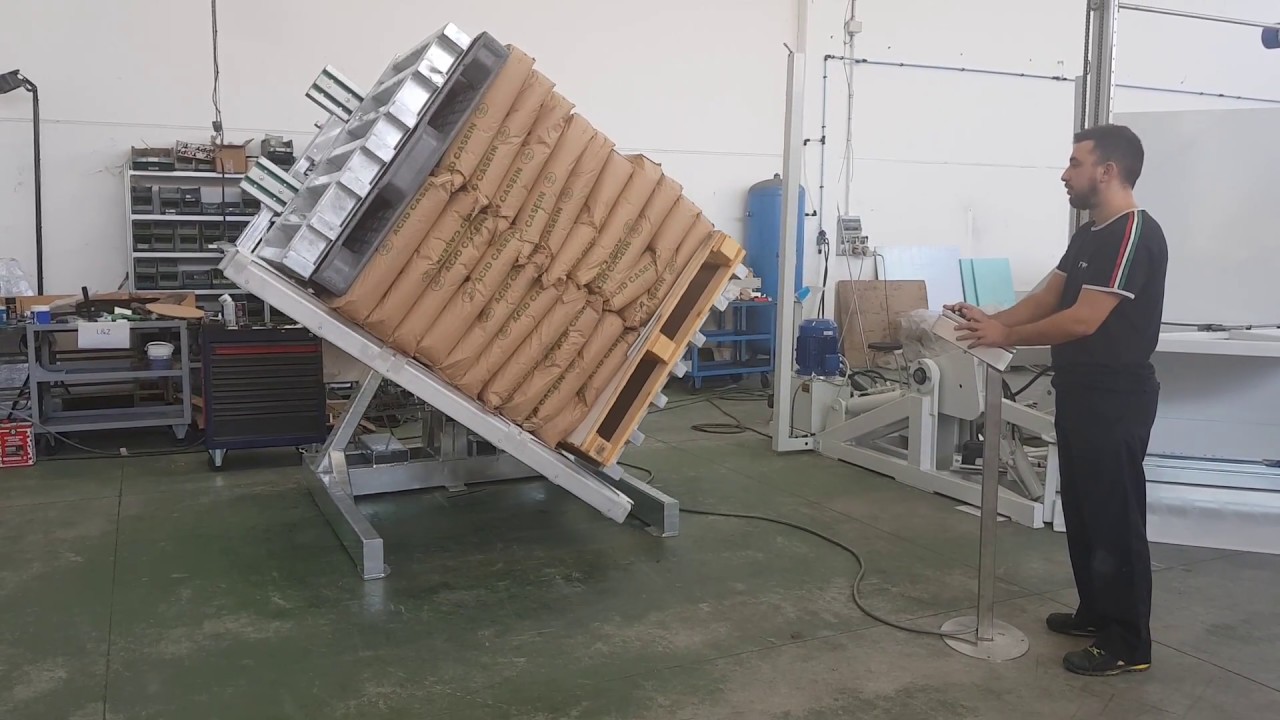
I always tell my clients, especially those in heavy industries like steel manufacturing, to think of safety features as a form of insurance built directly into the machine. You hope you never need them, but you absolutely must have them. A well-designed machine protects the operator not just from the machine itself, but also creates a safe zone that prevents accidents with other nearby equipment, like forklifts. This is about creating a complete safety ecosystem.
A Deep Dive into Essential Safety Components
For a detail-oriented leader like Javier, who has a background in engineering, the specifications of the equipment matter. A checklist of safety features provides a clear framework for evaluating potential suppliers and ensuring the chosen machine meets the high standards required for a 2 million ton/year steel mill or a bustling shipyard. Let's break down these non-negotiable features. This isn't just about compliance; it's about building a culture of safety from the ground up, starting with the equipment you choose.
1. Perimeter Guarding and Access Control
This is the first line of defense.
- Safety Fencing: A physical barrier, typically made of heavy-gauge wire mesh, that completely encloses the machine's operating area. It prevents anyone from accidentally walking into the path of the moving parts. In a busy shipyard, this physical separation is non-negotiable.
- Interlocking Gates: Any access door or gate in the fence must be fitted with an interlock switch. If the gate is opened while the machine is running, the switch sends a signal to the control system to immediately stop all motion. The machine should not be able to restart until the gate is closed and a reset button is pushed.
2. Presence Sensing Technology
This is the second, more active layer of protection.
- Light Curtains: These are photoelectric sensors that create an invisible infrared barrier across the machine's entry and exit points. If a person, a forklift, or any object breaks the curtain while the machine is in its cycle, the operation halts instantly. This is crucial for protecting operators during the loading and unloading phases. I've seen these devices prevent countless accidents in my own factory.
- Area Scanners: For more complex layouts, laser area scanners can be used. They create a programmable 2D safety zone. They can have a "warning" zone that sounds an alarm and a "stop" zone that shuts down the machine, offering a tiered response.
| Safety Feature | Function | Why It's Critical in a Shipyard |
|---|---|---|
| Safety Fencing | Creates a physical barrier around the machine. | Prevents personnel and vehicles from entering the danger zone in a chaotic environment. |
| Interlocking Gates | Stops the machine if an access gate is opened. | Ensures the machine is only operational when the area is fully secured. |
| Light Curtains | Creates an invisible barrier; stops machine if broken. | Provides immediate protection at loading/unloading points without a physical gate. |
| Emergency Stops (E-Stops) | Immediately cuts all power and motion. | Allows anyone to halt the machine instantly in any perceived emergency. |
| Hydraulic Pressure Control | Regulates clamping force on the load. | Prevents crushing or damaging the cargo, which could create an unstable load. |
| PLC with Safety Relay | A dedicated control system for safety functions. | Ensures that safety circuits are monitored, reliable, and fail-safe. |
Choosing a machine with a certified safety PLC (Programmable Logic Controller) and safety relays is a sign of a quality manufacturer. It means the safety system is not just an add-on but is integrated into the core logic of the machine. It constantly monitors all safety components (gates, E-stops, light curtains) and will prevent the machine from starting if any fault is detected. This is the kind of robust, reliable system that a forward-thinking industrial leader should demand. It’s an investment in operational stability and, most importantly, in the well-being of your people.
Beyond the machine, what operational procedures are crucial for safe pallet changes?
You can invest in the most advanced pallet changing machine with every safety feature imaginable. But if your team doesn't know how to use it correctly or if it's not properly maintained, you've created a false sense of security. I've seen this happen. A company spends a lot of money on great equipment but neglects the human and procedural elements. Soon, operators start developing unsafe shortcuts, and maintenance checks are missed. The new machine becomes just as dangerous as the old manual process.
Beyond the machine itself, crucial operational procedures for safe pallet changes include mandatory, role-specific operator training, documented pre-use safety checklists, a strict preventative maintenance schedule, and clear guidelines for load capacity and centering. Establishing a culture where safety protocols are consistently enforced and never bypassed is the most critical element of all.

As someone who built a factory from the ground up, I learned that procedures are the backbone of a safe and efficient operation. Technology is a powerful tool, but it's the combination of the right tool and the right process that delivers results. A strategic partner, which is what Javier seeks, doesn't just sell you a machine. They help you build the ecosystem of procedures around it to ensure long-term success. This holistic approach is what separates a mere supplier from a true solution provider.
Building a Bulletproof Safety Protocol
Creating a safe operating environment is an active, continuous process. It's not a one-time setup. It requires a structured approach that covers training, daily checks, long-term maintenance, and clear rules of engagement for every person who interacts with the machine. For a leader managing a large-scale operation, these documented procedures are essential for consistency, accountability, and driving the kind of high-utilization rates and low incident levels you aim for. Let's design a framework for these essential procedures.
1. Comprehensive and Ongoing Training
Training can't be a single event. It needs to be thorough and reinforced over time.
- Initial Training: Every authorized operator must receive hands-on training from the manufacturer or a certified trainer. This should cover not just normal operation, but also what to do in an emergency, how to clear a jam safely, and how to understand the machine's error codes.
- Refresher Courses: Schedule annual or bi-annual refresher training to combat complacency and introduce any new safety updates.
- Supervisor Training: Supervisors need to be experts, able to enforce rules and spot unsafe behavior. They are your first line of defense in maintaining standards.
2. Daily Pre-Use Inspections
Just as a pilot does a pre-flight check, your operators should perform a pre-use inspection.
- The Checklist: Create a simple, laminated checklist that stays with the machine. This list should be signed and dated at the start of every shift. This simple act builds a habit of vigilance. I implemented this in my own factory for our wrapping machines, and it drastically reduced downtime from minor, preventable issues.
| Pre-Use Check Item | What to Look For | Why It's Important |
|---|---|---|
| Safety Guards/Fences | Securely in place, no damage or gaps. | Confirms the primary physical barrier is intact. |
| Light Curtains | Clear of obstructions, test functionality. | Ensures the active protection system is working. |
| E-Stop Buttons | Not damaged, easy to access. | Guarantees the emergency stop function is available. |
| Hydraulic System | Check for leaks, hose condition. | Prevents sudden loss of pressure and machine failure. |
| General Area | Clean, dry, free of clutter. | Reduces slip and trip hazards around the machine. |
3. Proactive Maintenance Schedule
Waiting for a machine to break down is expensive and dangerous.
- Preventative Maintenance (PM): Work with the manufacturer to establish a PM schedule for weekly, monthly, and annual tasks. This includes lubricating moving parts, checking hydraulic fluid levels, inspecting electrical connections, and testing safety circuits.
- Documentation: Keep a logbook for all maintenance and repairs. This data is invaluable for identifying recurring issues and supports your goal of predictive maintenance. It helps you move from fixing failures to preventing them, a key step in achieving 95% uptime.
By integrating these procedures, you transform the pallet changer from a standalone piece of hardware into the centerpiece of a safe, reliable, and highly efficient logistics process. This is how you achieve operational excellence and protect your most valuable asset: your people.
How can you justify the investment in a safer pallet changing system?
As a business owner, every major capital expenditure comes under intense scrutiny. I know this from my own journey building SHJLPACK. You, like Javier, are responsible for the company's financial health and need to see a clear return on any investment. It's easy to look at the price tag of a high-quality pallet changing machine and see it only as a cost. The key is to shift your perspective and analyze it as a strategic investment with measurable returns, not just in safety, but in pure operational and financial efficiency.
You justify the investment in a safer pallet changing system by calculating its total return on investment (ROI), which extends far beyond injury prevention. The financial justification comes from quantifiable savings in labor costs, elimination of product damage, increased throughput speed, and reduced worker compensation insurance premiums. These combined savings often result in a payback period of 12-24 months, making it a sound financial decision, not just a safety upgrade.
When I was starting out, I had to make every dollar count. I learned a hard lesson early on: buying the cheap option is often the most expensive mistake. A machine that breaks down, damages product, or worse, injures someone, costs far more in the long run than a reliable, safe machine ever would. An investment in robust automation is an investment in stability, predictability, and profitability. It directly addresses the challenges of cost pressure and the goal of lowering overall operating costs. This is the perspective of a true strategic partner.
The Financial Case for Engineered Safety
Let's move beyond the abstract and build a concrete business case. For a pragmatic leader like Javier, numbers speak louder than words. We need to quantify the benefits and present them in a clear, logical format. This isn't just about feeling safer; it's about proving that safety is profitable. The goal to reduce overall operating costs by 8% is ambitious, and smart automation like this is exactly how you get there.
Let's analyze the cost-benefit of replacing a manual pallet changing process, which requires two workers, with an automated pallet inverter.
1. Deconstructing the "Cost" of Manual Handling
First, we must understand the true, often hidden, costs of the status quo.
- Labor: Two workers spending 15 minutes per pallet change.
- Product Damage: An estimated 1% of manually handled pallets result in damaged goods.
- Injury Risk: The potential cost of one serious back injury claim can be tens of thousands of dollars.
- Inefficiency: The process is a bottleneck, slowing down loading/unloading operations.
2. Quantifying the "Return" of Automation
Now, let's look at the gains from a pallet changing machine.
- Labor Savings: The process now requires one worker for only 2 minutes. The other worker can be re-assigned to a more value-added task.
- Product Protection: The secure, mechanical process virtually eliminates damage during the transfer. Damage rates drop to near zero.
- Throughput Increase: What took 15 minutes now takes 2. This dramatically increases the number of pallets you can process per hour, directly impacting capacity utilization.
- Safety as a Financial Asset: Reduced injury risk lowers insurance premiums and eliminates the massive direct and indirect costs of an accident (lost time, investigation, reduced morale).
| Financial Metric | Manual Process (Annual Cost/Loss) | Automated Process (Annual Gain/Saving) | Impact on Goals |
|---|---|---|---|
| Labor Cost | High (2 workers, slow process) | Reduced by >80% (1 worker, fast process) | Directly lowers operational cost. |
| Product Damage | Significant (e.g., 1% of value) | Eliminated (damage rate < 0.1%) | Improves profit margin, customer satisfaction. |
| Throughput | Low (bottleneck) | Increased by >500% (e.g., from 4 to 25 pallets/hr) | Boosts capacity utilization and efficiency. |
| Insurance/Injury Cost | High Risk & Premiums | Dramatically Reduced | Lowers fixed costs and operational volatility. |
When you present the data this way, the decision becomes clear. The pallet changing machine is not an expense. It is a cost-reduction and productivity-enhancing tool. It is a direct contributor to achieving the core business goals of higher efficiency, lower costs, and improved profitability. From my experience helping clients in the steel industry and beyond, the payback period for this type of automation is often surprisingly short. It's an investment in a smarter, safer, and more profitable future.
Conclusion
Ultimately, ensuring safety in shipyard pallet changes comes down to combining the right technology with robust procedures. It's about engineering the risk out of your process for good.


